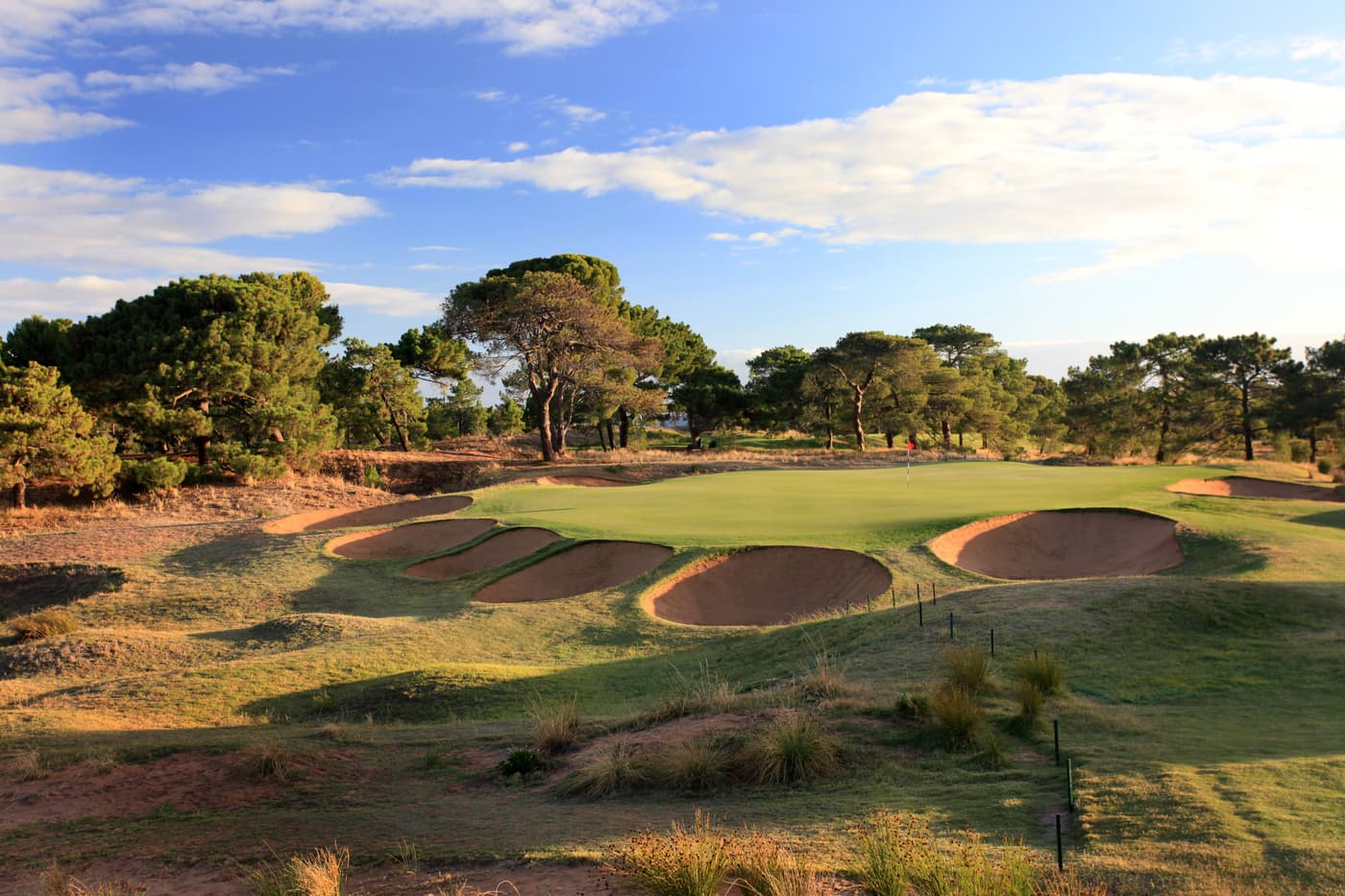
- Address328 Tapleys Hill Rd, Seaton SA 5023, Australia
- Championships hosted
Australian Open winners at Royal Adelaide Golf Club:
Greg Chalmers (Aus) 1998,
Gary Player (SA) 1962,
Jim Ferrier (Aus) 1938,
Fergus McMahon (SA) 1935,
Mick Ryan (Aus) 1932,
Ivo Whitton (Aus) 1929,
Ivo Whitton (Aus) 1926,
Tom Howard (Aus) 1923,
Carnegie Clark (Aus) 1910.
The Royal Adelaide Golf Club was formed in 1892 and has been based at the western suburb of Seaton since 1905, less than 20 minutes from Adelaide’s town centre and less than 2 kilometres from the coast. Although the present day course occupies the same land as the course that was first called Royal Adelaide, only eight of the modern day holes bear close resemblance to that layout.
‘Cargie’ Rymill and Club Secretary C.L. Gardiner laid out the first rudimentary course in 1905. An article on Dan Soutar by John Scarth and Neil Crafter in Golf Architecture takes up the story: “In 1906 the Club went in search of a professional opinion on the layout for the definitive course. They selected newly turned professional Dan Soutar, with Club minutes recording that no member was to give any opinions on the course to Soutar except the Committee."
“Soutar himself wrote later that year in his book The Australian Golfer : “Early in 1906 I was asked by the Club to go over and suggest any necessary alterations or improvements to the new course. I formed a most favourable opinion of it and when the alterations are made in accordance with my suggestions, the Club will have an excellent championship course, equal to any in Australia.”
“The Committee “decided not to adopt Soutar’s new course at present” and work started almost immediately on making bunkers on the Rymill layout. Interestingly, the new course made use of 14 of the greensites that were planned by Soutar."
Alister MacKenzie made a four day visit to South Australia in the middle of his Melbourne based assignments in 1926. The club was keen to canvass his views as to a possible re-routing of the holes as the Grange to Adelaide tram line which bisected the property was due to be electrified. MacKenzie, always quick to ferment his ideas, proposed an immediate crossing of the railway line between locker room and first tee so that the 1st was played west of the railway on a piece of land that was to occupy the first 13 holes. The club demurred on strong protest from the membership so the 1st retained its historical position.
MacKenzie was enthusiastic about the course’s potential, remarking that it offered “real links land, a delightful combination of sand dunes and fir trees, a most unusual combination, even at the best seaside courses” adding that, if his suggestions were acted upon, the resultant course would be “superior to most, if not all, English championship courses.” Rebuffed at the 1st, it is in the run of holes from the 3rd to the 8th that Mackenzie’s legacy is most clearly delineated. Somewhat analogous to the role played by the four hills that define the front nine of the West course at Royal Melbourne, MacKenzie’s plan made the most of the large sand dune positioned around the 3rd green.
Although the sea hasn’t bordered the course at The Royal Adelaide for some 10,000 years, it remains, like Royal Lytham & St Annes, more of a links course than an inland course. Royal Adelaide is a favourite golf course of many Australian golfers and it’s easy to see why.
Part of the above passage is a brief edited extract from The Finest Golf Courses of Asia and Australasia by James Spence. Reproduced with kind permission.
Course Reviews
Leave a Review
This course has not been reviewed.
If you have played this course, consider .
Thanks for the review
Your review has been successfully submitted and will be reviewed for approval.
Course Reviewed
You’ve already submitted a review for this course.
Course Architect
View All
Alister MacKenzie was born in England, but his parents were Scottish and the family holidayed every year close to where his father was raised in the traditional Clan MacKenzie lands of Sutherland.




